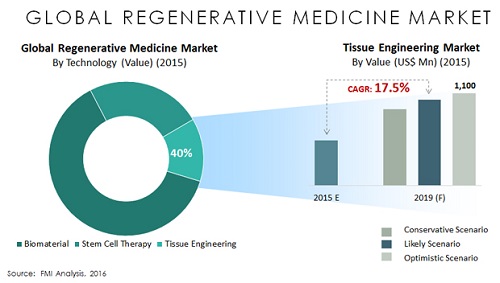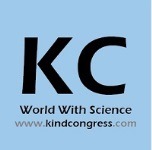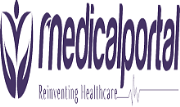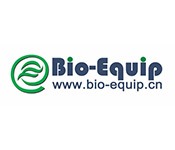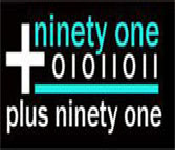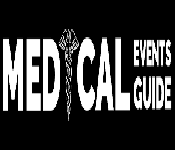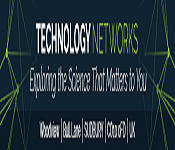Theme: Cell in Progress: Exploring Regenerative medicine through Stem Cells
Stem Regenerative 2018
11th Annual Conference on Stem Cell and Regenerative Medicine will be held at Helsinki, Finland.
ME Conferences cordially invites all participants across the Globe to attend the 11th Annual Conference on Stem Cell and Regenerative Medicine during October 15-16, 2018 at Helsinki, Finland which includes prominent keynote speakers, oral talks, poster presentations and Exhibitions.
Stem cells are those which are undifferentiated at the biological level and have an ability to divide (through mitosis) to produce many stem cells. The global stem cell market is expected to reach USD 15.63 billion by 2025, growing at a CAGR of 9.2%, according to a new report by Grand View Research, Inc. Augmentation in research studies that aim at broadening the utility scope of associated products is anticipated to drive the market growth. Regenerative medicine: branch of Translational Research in the areas of tissue engineering and molecular biology. Regenerative medicine stimulates the body’s own repair mechanisms to engineer the damaged tissues and organs. The global Regenerative medicine market is expected to reach USD 38.70 Billion by 2021 from USD 13.41 Billion in 2016 at a CAGR of 23.6% from 2016 to 2021. The major factor driving the growth of this market, are government and private funding to support the development of regenerative medicine.
Objective:
Stem regenerative 2018 ensures the goal to fulfill the prevailing gaps in the transformation of science to hope, to deliver the prompt solutions to all in the need. Stem Regenerative 2018 annual conference is anticipating more than 150+ participating delegates across the globe to discuss about the conference title.
About organization:
ME Conferences is one of the leading Open Access publishers and organizers of international scientific conferences and events every year across USA, Europe & Asia, ME Conferences has so far organized 300+ International Conferences across the World with 500+ peer-reviewed open access journals in basic science, health, and technology. ME Conferences International conferences is also in association with more than 1000 International scientific and technological societies and associations and a team of 30,000 eminent scholars, reputed scientists as editorial board members.
Why to attend???
With individuals from all around the globe concentrated on finding out about Stem Cell and Regenerative Medicine and its advances; this is your best chance to achieve the biggest collection of members from the Stem Cell and Regenerative Medicine people group. Lead introductions, circulate data, meet with present and potential researchers, make a sprinkle with new Regenerative Medicine improvements, and get name acknowledgment at this occasion. Widely acclaimed speakers, the latest systems, improvements, and the most up to date refreshes in Stem Cell and Regenerative Medicine are signs of this gathering.
Track 1: Stem Cell Biology
Stem cells are those which are undifferentiated at the biological level and have an ability to divide (through mitosis) to produce many stem cells. They can be found in multicellular living organisms. In mammals, there are two broad types of stem cells: Embryonic and Adult stem cells. Embryonic Stem cells are also known as pluripotent stem cells isolated from the inner cell mass of blastocysts, where Adult stem cells are found in various tissues. The main function of stem cells and progenitor cells is to act as a repair system for the body, replenishing adult tissue.
Track 2: Regenerative Medicine
The process of “replacing tissues or organs, engineering or regenerating human cells to restore or establish normal function” is generally termed as Regenerative medicine. Regenerative medicine is a branch of Translational Research in the areas of tissue engineering and molecular biology. Regenerative medicine stimulates the body’s own repair mechanisms to engineer the damaged tissues and organs.
Track 3: Bioprocessing & Bio Banking
Bioprocessing is a technology used for transferring the current laboratory-based practice of stem cell tissue culture to the clinical research as therapeutics necessitates for the application of engineering principles and practices to achieve control, automation, safety, validation and reproducibility of the process and the product. Biobanks are the type of biorepositories which collects, processes, stores and distributes biospecimens to support future scientific investigation. This plays an important role in helping the researchers providing the background knowledge of the subject.
Track 4: Stem Cell Niche
The anatomical region where stem cells are found in a shallow recess is referred to a stem-cell niche. It refers to a microenvironment with reference to the in vivo or in vitro stem cells; they even interact with stem cells to regulate cell fate. Various niche factors act on embryonic stem cells to induce their proliferation or differentiation for the development of the fetus and in altering the gene expression during the embryonic development. In the human body, stem cells maintain the adult stem cells in a dormancy state, but during the tissue injury it actively signals to stem cells to promote either self-renewal or differentiation to form a new tissue.
Track 5: Tissue Regeneration
Tissue regeneration is a branch of Regenerative medicine which deals with the study of regrowth or repair of the damaged or lost tissues in response to the injury. Non-injured tissues by default have expanded cells in the formation over time, but the new cells formed in response to the injury replaces the expanded cells in closing up the wounded site leaving a scar mark on the skin. For example, an injured cell is regenerated in 4-5 weeks, whereas a non-injured cell regenerates in just 3-4 days.
Track 6: Embryonic Stem cell
Embryonic Stem cell is a broad type of Stem cell, which is also known as pluripotent stem cells derived from the inner cell mass of blastocyst, an early stage of pre-implantation embryo. Human embryos consist of 50-150 cells when they reach the blastocyst stage in 4-5 days of post fertilization. The destruction of the blastocyst mainly results in the isolation of the embryoblast or inner cell mass, which ethically raises issues in the post-implantation stage of development whether embryos at the pre-implantation stage should be considered to have the same moral or legal status or not.
Track 7: Stem Cell Transplantation
The medical procedure in which the organ from an individual is made to remove and place in the other individual is referred as transplantation. In stem cell transplantation, the stem cells are made to remove first, a high dose of chemotherapy or radiation therapy is given to destroy diseased cells. The extracted stem cells are made to implant in the patient, where they produce new blood and immune cells replacing the cells destroyed by the treatment.
Track 8: Patient Specific Drug Discovery
The process of research or discover of a medicine for a disease is generally called as drug discovery. In contrast, patient specific drug discovery is a process of inventing a drug by considering the pros and cons and the anatomical conditions of the patient. The general medicine is discovered on the basis of the active ingredient from traditional remedies or serendipitous discovery. It can also be referred as personalized medicine, which separates patients into different categories.
Track 9: Biomedicine
Biomedicine is a branch of medicine biology which deals with the study of biological and physiological principles to clinical practice. It can be related to many categories under the health care and biological related fields. Delivering of the drug to the body, biostatistical analysis, molecular medicine, and Nano medicine can be sub-categorized under Biomedicine. For example, the mechanism of delivering the drug describes the information about the drug being delivered in a biological concept.
Track 10: Adult Stem Cell
Adult Stem cell is a broad type of stem cells, which exhibits an ability to divide or self-renew cells in an indefinite manner, to generate different types of cell of organs to form, from which they have been originated and potentially regenerating the entire organ from a large number of cells. There are no such controversial issues with scientific researches for the use of adult stem cells, unlike the embryonic stem cells.
Track 11: Stem Cell Biomarkers
Alterations in the cells, tissues or fluids of molecular, cellular or biochemical that are measured and evaluated to indicate normal processes like biological, pathogenic or pharmacologic, which responses to a therapeutic interventions is defined as biomarkers or biological markers. Biomarkers used to isolate and identify stem cells which are genes and their protein products are defined as Stem cell markers.
Track 12: Rehabilitation Engineering
Designing and developing a supportive medical product with the aid of trending technology to create a solution to the problems faced by the individuals with the impairments in the functional areas like mobility, communications, hearing, vision, and cognition is studied under the subject Rehabilitation Engineering. In contrast, the rehabilitation engineering gives a supportive mechanism for the humans with functional impairments, whereas regenerative medicine tries out to bring back the disabled organ to the original form.
Track 13: Stem Cells for Organ Repair
It has been stated that stem cells have an ability to produce a large number of cells which in turn helps in forming the destroyed tissue or an organ. In contrast, stem cells can also be aided in repairing the damaged organs, in which the mechanism carries out in two different options: support mechanism and replace option. The support mechanism of the stem cell is regeneration or the regrowth of the tissue or organ cells avoiding detrimental fibrosis. The replace option of the stem cell is to transplant the stem cell.
Track 14: Genetically modified Stem Cell Therapy
An experimental technique which uses the genetic cell in the modification of the stem cells in the treatment or prevention of the disease is referred to as the combined Gene and Stem cell therapy. The therapy in general influences the course of different genetic and multi factorial diseases at the DNA/RNA level. The stem cells used in the gene therapy is a valid one which has a complex consequence for treating a variety of diseases, where most don’t have a cure.
Track 15: Cancer Stem Cell
Cancer stem cells (CSCs) are the cancer cells found within tumors or hematological regions that possess characteristics related to the normal stem cell. Cancer stem cells specifically have an ability to give rise to all cell types found in a particular cancer sample. CSCs are tumorigenic which form tumors cells; they generate tumors by self-renewal or rapid division of the cells differentiating into multiple cell type. These cells give rise to new tumors by metastasis and relapse caused by hypothesizing the stem cells to persist in tumors as a distinct population.
Track 16: 3D Bioprinting & Biofabrication
3D printing is a 3-dimentional printing machine which gives the information of a 2D image in the form of 3D object. The layer of materials to form a 3D object is controlled by the computer by providing geometry of the object. 3D Bioprinting aids Tissue Engineering by providing an in depth information of the image and structure analysis of the image, which helps in solving the critical problems. Biofabrication is referred to the production of artificial tissues or organs to address health challenges in medicine. It often uses the principle of 3D Bioprinting to form cells, gels and fibers into an organ.
Related Regenerative Medicine Conferences | Stem Cell Conferences | Stem Cell Congress | Tissue Science Conferences | Middle-East Conferences
Related conferences:
-
29th International Conference on Public Mental Health and Neuroscience during July 16-18, 2018, Dubai, UAE
-
22nd World Nutrition and Pediatrics Healthcare Conferencesduring July 16-18, 2018, Dubai, UAE
-
5th International Conference on Medicinal Practices: Herbal, Holistic and Traditional during July 25-26, 2018, Kauala Lumpur, Malaysia
-
International Conference on Biomarkers and Cancer Targets during July 16-17, 2018, Dubai, UAE
-
2nd World congress on Oncology and Radiology during July 16-17, 2018, Dubai, UAE
-
21st Global Summit on Pediatrics, Neonatology & Primary Care during July 16-17, 2018, Dubai, UAE
-
20th World Dermatology and Aesthetic Congress during July 23-24, 2018, Malaysia
-
18th International Conference on Medicinal and Pharmaceutical Chemistry during July 19-21, 2018, Malaysia
-
22nd International Conference on Primary Healthcare and Nursing during July 19-21, 2018, Dubai, UAE
-
15th World Nephrologists Meeting during July 23-24, 2018, Malaysia
-
6th Annual Congress on Dentistry and Dental Medicine during July 23-24, 2018, Malaysia
-
10th International Conference on Genomics and Molecular Biology during May 21-23, 2018, Barcelona, Spain
-
4th International Conference on Synthetic Biology and Tissue Engineering during June 11-12, 2018, Rome, Italy
-
6th International Conference on Integrative Biology during May 21-23, 2018, Barcelona, Spain
-
4th International Conference on Bioscience during July 2-3, 2018, Vienna, Austria
-
13th International Conference on Tissue Engineering and Regenerative Medicine during July 12-13, 2018, Paris, France
-
World Congress on Organ Transplantation and Artificial Organs during August 24-25, 2018, Tokyo, Japan
-
Translational and Regenerative Medicine Conference during April 25-27, 2018, Rome, Italy
-
2018 TERMIS Congress during September 4-7, 2018, Kyoto, Japan
-
International Conference on Tissue Science & Regenerative Medicine during April 23-25, 2018, Valencia, Spain
-
4th Regenerative Medicine Expo & Conference during February 21-23, 2018, Osaka, Japan
-
The Future of Regenerative Medicine Congress during September 7-9, 2018, New Jersey, USA
-
21st Euro Biotechnology Congress during October 11-12, 2018, Moscow, Russia
-
World Precision Medicine Congress 2018 during May 16-18, 2018, London, UK.
Related Societies and Associations: International Society for Stem Cell Research; Formosa Association Regenerative Medicine (FARM); International Stem Cell Research; Australasian Society for Stem Cell Research; The National Stem Cell Foundation; Dutch Society for Stem Cell Research; Canadian Association for Research in Regenerative Medicine; Stem Cell Evaluation Technology Research Association; International Society for Cellular Therapy (ISCT); The Center for Stem Cell and Regenerative Medicine (The Stem Cell Center ); German Society for Stem Cell Research (GSZ); Euro StemCell: Stem Cell Research; Taiwan Society for Stem Cell Research (TSSCR); Stem Cell Society Singapore; STEM CELLS Translational Medicine (SCTM); New York Stem Cell Foundation; American Society for Reproductive Medicine; Alliance for Regenerative Medicine; California Institute for Regenerative Medicine; Australian Society for Stem Cell Research; Norwegian Center for Stem Cell Research; Sanford Consortium for Regenerative Medicine; Society for Hematology and Stem Cells (ISEH); Korean Society for Stem Cell Research; Danish Stem Cell Society; European Stem Cell Community; European Cancer Stem Cell Research Institute; International Placenta Stem Cell Society (IPLASS); South African Stem Cell Transplantation Society (SASCeTS);
Importance & Scope:
Stem Cell is a broad-spectrum journal that covers the entire spectrum of stem cell biology. Topics covered include embryonic stem cells, pluripotency, germline stem cells, tissue-specific stem cells, stem cell differentiation, epigenetics, stem cell genomics and systems biology, genome reprogramming, cancer stem cells, stem cell niches, stem-cell-based disease models, nuclear transfer technology, bioengineering, drug discovery, in vivo imaging of stem cells, therapeutic applications, regenerative medicine, clinical and translational insights, stem cell research policies, ethical issues, and technical or resource-based innovations.
Why Helsinki ?
Helsinki is the capital of Finland, vibrant seaside of attractive islands and prodigious green parks. Helsinki’s is been awarded with City of Design status by UNESCO. The population of 1.4 million makes it the most populous metropolis and urban area in Finland with important political, educational, financial, cultural and research centre. The capital of Finland is filled with lively events all year round. Design Scene, Architectural Innovations, Finnish Flavours, Natural Environment add colours to Helsinki.
Scientists in Finland are working on making stem cells as key to youth. Stem cell research is widely recognised and funded in European Countries where researchers doing great work on stem cell and regenerative medicine. In fact, ensuing the principle that stem cell research provides vast prospective to create new treatments for several serious diseases such as diabetes and heart disease.
The location of the Helsinki Airport is the neighbouring city of Vantaa, which has frequent service to many destinations in Europe and Asia. Helsinki was the World Design Capital for 2012.
Conference Highlights:
- Stem Cell Biology
- Regenerative Medicine
- Bioprocessing & Bio Banking
- Stem Cell Niche
- Tissue Regeneration
- Stem Cell Transplantation
- Patient Specific Drug Discovery
- Biomedicine
- Adult Stem Cell
- Stem Cell Biomarkers
Major Global Associations & Societies Associated with Stem cell & Regenerative Medicine:
- International Society for Stem Cell Research
- International Stem Cell Research
- Euro StemCell: Stem Cell Research
- Australasian Society for Stem Cell Research
- Stem Cell Society Singapore
- The National Stem Cell Foundation
- Dutch Society for Stem Cell Research
- New York Stem Cell Foundation
- Alliance for Regenerative Medicine
- Canadian Association for Research in Regenerative Medicine
- Stem Cell Evaluation Technology Research Association
Targeted Participants:
- Researchers & Scientists related to Stem cell & Regenerative Medicine R&D
- Deans and Professors
- Directors, CEOs, Presidents and Vice Presidents
- University Faculty
- Medical Schools/Colleges
- Associations and Societies related to Stem cell & Regenerative Medicine R&D
- Stem cell & Regenerative Medicine Program Organizing Government and Non-Government Organizations
- Business Entrepreneurs
- Drug Manufacturing Companies
- Stem cell & Regenerative Medicine Developers and Investigators
Market Growth of Stem Cell & Regenerative Medicine Research:
By the year 2025, the global stem cell market is expected to reach USD of 15.63 Billion with a growth of 9.2% in CAGR according to the new report made by Grand View Research, Inc. The market growth is anticipated to be driven by aiming at broadening the utility scope of associated products in Augmentation Research. The research projects have opened the possibility of implementation of several clinical applications through discovering the new regenerative medicine for incurable diseases.
Scientists are engaged in discovering novel methods to create human stem cells. This is to address the increasing demand for stem cell production for potential investigation in disease management. This factor is certainly expected to accelerate the development of regenerative medicine, thus driving industrial growth.

Fig: Market Analysis of Stem Cell Culture
The global Regenerative medicine market is expected to reach USD 38.70 Billion by 2021 from USD 13.41 Billion in 2016 at a CAGR of 23.6% from 2016 to 2021. The major factor driving the growth of this market, are government and private funding to support the development of regenerative medicine, rising prevalence of chronic diseases and genetic disorders, increase in global healthcare expenditure, and rapid growth in the aging population.
The report segments this market based on types, therapy, application, and regions. Based on types, the Regenerative medicine market is segmented into cell-based products and acellular products. In 2016, cell-based products expected to dominate the global Regenerative medicine market. The key drivers include the increasing awareness about stem cell therapy, growing funding for new stem cell lines, and development of advanced genomic methods for cell analysis.
Based on therapy, the Regenerative medicine market is segmented into cell therapy, gene therapy, tissue engineering, and immunotherapy. The cell therapy segment is expected to account for the largest share of this market, increasing funding from several agencies and private organizations for the research and development of cell therapies, growing inclination of the healthcare industry towards stem cell research, and increasing global awareness about the benefits of stem cell therapies.
Fig: Market Analysis of Global Regenerative Medicine
Conference Highlights
- Stem Cell Biology
- Regenerative Medicine
- Bioprocessing & Bio Banking
- Stem Cell Niche
- Tissue Regeneration
- Embryonic Stem cell
- Stem Cell Transplantation
- Patient Specific Drug Discovery
- Biomedicine
- Adult Stem Cell
- Stem Cell Biomarkers
- Rehabilitation Engineering
- Stem Cells for Organ Repair
- Genetically modified Stem Cell Therapy
- Cancer Stem Cell
- 3D Bioprinting & Biofabrication
To share your views and research, please click here to register for the Conference.
To Collaborate Scientific Professionals around the World
| Conference Date | October 15-16, 2018 | ||
| Sponsors & Exhibitors |
|
||
| Speaker Opportunity Closed | Day 1 | Day 2 | |
| Poster Opportunity Closed | Click Here to View | ||
Useful Links
Special Issues
All accepted abstracts will be published in respective Our International Journals.
- Journal of Stem Cell Research & Therapy
- Journal of Transplantation Technologies & Research
- Journal of Genetic Syndromes & Gene Therapy
Abstracts will be provided with Digital Object Identifier by





